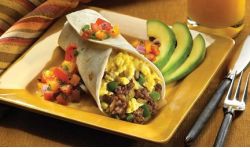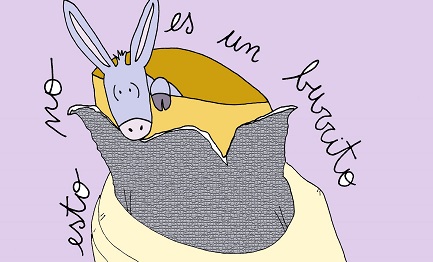A riddle of Mexican cuisine

What first comes to mind when you’re asked about a Mexican cuisine? Most likely – chili. It is well known that Mexicans love spicy food, although, in fact, not all of them eat a lot of such one daily.
But we are not talking about chili. The character of our story is a burrito.
In Mexico, this dish which seems to be quite a Mexican one does not have much popularity. There is a legend that the burrito’s home is the state of Chihuahua in northern part of Mexico. Burrito, such as fajitas, is a representative of the "Tex-Mex" cuisine. This term is used relative to dishes which are cooked by Mexican families living in Texas (the former part of Mexico). They are consumed mostly in Chihuahua and some other states of the north of the country.
The rest of the country seems to not recognize the burrito as a part of Mexican cuisine. The most of Mexicans will prefer tacos, quesadilla with lots of sauce or a large plate of enchiladas.
So, what does the legend say? It all started in Ciudad Juárez of the state of Chihuahua during the Mexican revolution of 1910. Juan Mendez lived there in a district Bella Vista and earned his living by making and selling food. To his products did not cool down, he prepared several large tortillas and wrapped the food in them. The dish has become popular in the city, and the people learned about it in American towns close to the border too. To deliver his invention there, Juan bought a donkey (in Spanish – burrito). It was much easier to cross the Rio Bravo, separating the two countries, using the animal. Every day, the customers were looking forward to the famous "burrito".

The history argues with legend and gives the irrefutable facts. So, in the Spanish dictionary which was published in 1895 the word "burrito" is already fixed in lexical meaning of a meal wrapped in tortilla. Linguists argue that the origin of the name of the dish therefore is most likely concerned with its similarity with donkey ears or bundles that have traditionally been carried on donkeys.
Anyway, many Mexicans say that "gringos", i.e. Americans, have invented burritos to sell them around the world such a Mexican food.
From the outset, the direction of burrito’s movement was set from Mexico to America, from south to north. After conquest Texas, "burritos" went further to the north, and in particular, to the west, conquering California, which today can rightly be considered the world capital of burritos. For the average American this dish combines the ease of cooking with a slight touch of the exotic, and that ensures its popularity.
In California, there are many species and subspecies of burritos, and, such all things born under the sky of this most ingenious state of the U.S., local burritos are subjected to constant mutation. In San Diego, they are made with "carne asada" – grilled meat on a Mexican style – crisp and spicy: wrapped in a tortilla, the dish is an excellent snack to beer and is indispensable for the treatment of a hangover the next morning. The ultimate quality, by the way, is the hallmark of Mexican cuisine in general, even in its simplified American version.
In San Francisco burrito is a more complicated dish: a stew with black beans and rice in a corn or wheat tortilla. You can be full up during a day with only one such burrito. And yet, the most diverse and most delicious burritos are made not in San Francisco or San Diego, but in Los Angeles.

Enjoy ten fabulous places to swim along the coast of Quintana Roo. The sun, sand and gorgeous turquoise-blue waters of the Caribbean are for you! You will definitely want to come back!

Every year on August 30 the residents of Lima and other cities of Peru go to the streets to commemorate their saint patroness. They arrange processions from churches named after Saint Rose; organize the folk dance festivals, exhibitions of folk artists, and in the streets put the tables with a variety of local treats. In the evening, many cities arrange fireworks.















